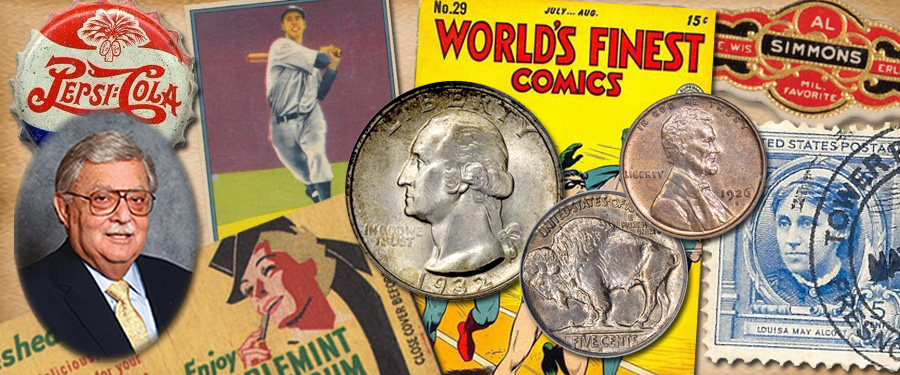
I am often asked: “Since your family was so involved in coins, why weren’t you more involved with coin collecting?
First of all, collecting coins during my childhood was financially difficult as having a few cents extra was a big deal, not just for kids and teenagers, but for the whole family. Earnings were limited and it was most important to feed, clothe and house the family. As related earlier, I occasionally had a few extra pennies when I was in school, either left from my allowance or from delivering magazines and newspapers. There were a lot of ways I could spend those extra pennies, some of which I have discussed in earlier parts of this story.
As part of a family dedicated to the coin business and coin collectors, I was expected to develop a love for coins and to increase my knowledge to better serve our clients. My father gave me coin boards, starting with Lincoln cents. I searched through my very spare change and when I found interesting dates or different mints I inserted them in my coin board. I traded with friends and searched the change brought home by my father or mother. I worked in my father’s and my uncle’s coin store when I wasn’t in school, sorting coins, putting them into stock, and doing chores. Sometimes my reward was a date I did not have for my Lincoln cent collection.
For the most part, it was only from the shop or when someone visited from out of town, that I would find an "S” or "D" mintmark, as they were rare in eastern cities. Each one I found was a new "treasure” for my collection. This inexpensive method of collecting was also very educational, as it taught me to recognize what was easy to find and what was scarce or rare.
During my childhood there were new designs in American coins. There was the new Washington quarter, first issued in 1932. But saving these was not practical, as 25 cents was a lot of money for me at the time. Only six million were issued in all three mints that year, even though it was a special design to commemorate the 200th anniversary of the birth of our first president. Even finding an example of the new design was difficult, not to mention coming up with 25 cents that could be “saved” in this way. The next year no Washington quarters were struck, but in 1934 over 35 million were made, as by then they were needed in commerce. Likewise dime mintages during the early years of the Depression were spotty, as none were struck in 1932 or 1933.
In 1938 the Jefferson nickel made its appearance and this made the outgoing Buffalo nickels (already very popular) even more desirable to collect. As a kid, collecting nickels was a whole different ball game than collecting “pennies,” as five cents could be a prohibitive amount to set aside. Needless to say, collecting silver coins like dimes, quarters, half dollars and silver dollars was nearly impossible. I was lucky to work in the Stack’s store, as that gave me the opportunity to at least see and study these higher denominations.
More to come next week.





